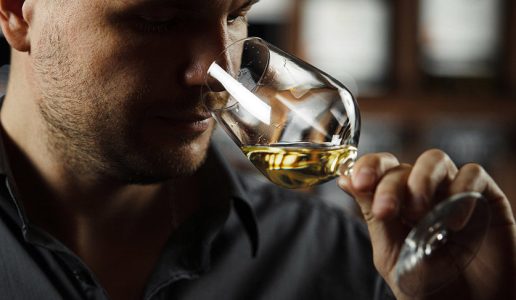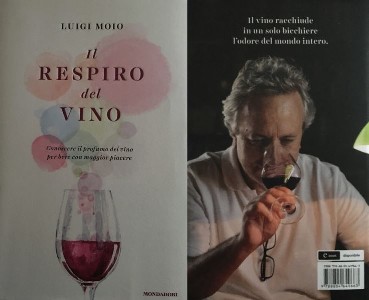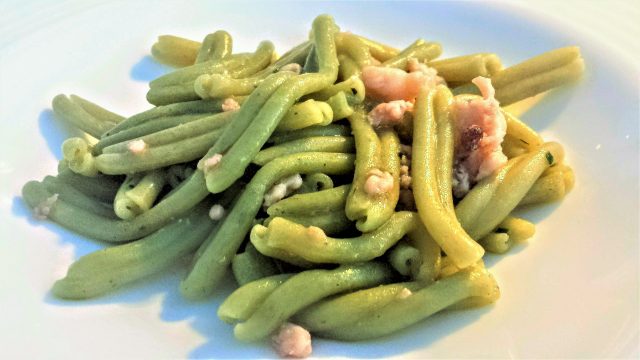The importance of olfaction

While winemaking research has focused on the olfactory aspects of a wine, in order to maintain as long as possible its youthful fruit notes, some critics have branded this as “cheating”.
A few days ago, I received a phone call from a friend, a renowned wine critic who works for another publication, and after a few pleasantries he said to me: “You were right to say that production “is way ahead of (wine) criticism””. A few years ago, my observation was considered nothing more than a provocation. When I asked what had made him change his mind, he explained that, thanks to a new project he was involved with as a winemaker, he was able to follow the winemaking process much closer. And he realized, conversing with his enologist, how much progress had been made over the past 20 years in understanding the chemical process in winemaking. Of how this knowledge led to the development of technologies to apply these discoveries. The final aim of this research was to improve the wine, enhance the understanding of a varietal and thus its territoriality, in other words the combination of the varietal, wine and territory.
 Most recent studies have focused in the olfactory aspects of a wine. This involves research into the molecules that compose the aromatic profile of a varietal and make it distinguishable from another. Among other things, these studies have overturned certain misconceptions related to “tradition”, making them not only obsolete but detrimental to the characteristics of the wine and the varietal itself. There is no doubt that many excellent wines have been made with a limited knowledge of the olfactory aspects of an Italian varietal and this reassures us that the improvement of Italian wine will be unstoppable now that methods and technologies exist to exalt varietals and winemaking areas particularly suited for winemaking.
Most recent studies have focused in the olfactory aspects of a wine. This involves research into the molecules that compose the aromatic profile of a varietal and make it distinguishable from another. Among other things, these studies have overturned certain misconceptions related to “tradition”, making them not only obsolete but detrimental to the characteristics of the wine and the varietal itself. There is no doubt that many excellent wines have been made with a limited knowledge of the olfactory aspects of an Italian varietal and this reassures us that the improvement of Italian wine will be unstoppable now that methods and technologies exist to exalt varietals and winemaking areas particularly suited for winemaking.
This potential has not gone unnoticed by foreign operators (buyers and critics) who are continually increasing their acquisitions of and articles about Italian wine. On the other hand, this new age for Italian wine would appear to be foreign to Italian wine critics, who seem to be more interested in getting more “likes” to their articles than trying to understand changes in wine production. We at DoctorWinefought similar battles years ago, when we were on a different team. Between the end of the 1980s and beginning of the ‘90s, the goal was to have tannins that were less bitter and drying, a greater complexity in the flavor and more harmony. We wanted the aromas to be free of outside contamination that often came from obsolete containers and oxidation had to be less evident. We clashed with the same mentality of “worshiping the ashes rather than keeping the flame” that we now find among some producers, while wine criticism of the time was just that. Many producers today sense a need for change but critics are holding back, locked into non-scientific and self-referential positions. How sad.
There is an important aspect, involving above all wines that age long, regarding the slightly evolved nature of an aroma that was and continues to be considered as a positive and obligatory characteristic of being matured in wood. However, some producers have now begun to ask themselves whether it might be a good thing to prologue, as long as possible, the scents of freshness in a wine, also in consideration of the fact that the breakdown of the aroma over the years often makes different wines more the similar to each other, at least in regard to the bouquet. Science has determined that the molecules that define the aroma in the wines become practically the identical with age, no matter what the grape or its origin. This was evidence that it was the natural evolution of oxidative substances and not the result of more complex substances generated by the reaction of alcohol with acids and aldehydes, which unfortunately remain below the olfactory threshold of humans. Thus it is useless to seek premature oxidation because all it does make the varietal and territory lose their identity.
Overcoming this problem involves multiple, expensive and complicated interventions, which make them difficult even when the mechanisms are understood. The result is that while production and producers are doing their best to overcome the problem (with the market rewarding these efforts), many wine critics and other communicators not only ignore scientific evidence but also the efforts by informed and visionary producers who are focusing on the olfactory aspects to better reflect their territory in the wine made with native varietals.
Are these critics doing this out of a certain superficiality, lack of knowledge or to avoid resetting the parameters they employ in evaluation? Frankly, I don’t know and it’s not a problem I’m interested in.
PS: A couple of years ago, a wonderful book came out dealing with the new scientific discoveries in the field of wine aromas. It was called The Breath of Wine and was written by Professor Luigi Moio, who has the gift of making this subject comprehensible for all. I, personally, was fascinated by some of the works he cited in his exhaustive bibliography. My guess is that while this book had a great success, it was not read by many of my colleagues. A pity.

 Italiano
Italiano








